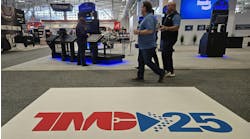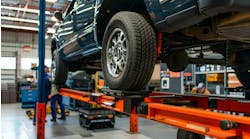Will R-1234yf see widespread adoption, and when will costs go down?
There were only two vehicles in the North American market using R-1234yf refrigerant prior to 2014. However, by the end of 2015, we saw that number expand to at least six (and as many as eight) models under various manufacturers using R-1234yf for air conditioning. For a technician, the biggest need is most likely a new recovery, recycle and recharge machine to service these vehicles, followed soon after by the need to acquire the refrigerant to recharge a vehicle’s system. Some new hand tools may be needed because of the different systems and connections, but the main focus is the recovery and recharging for the customer.
At this point, you’ll still need to buy R-1234yf through the OE, as there is little to no aftermarket distribution. Have you prepared yourself when your customers ask, "My old car was only $xx to service the AC system, so why is this double (or even triple) the cost?’"
You’ll need to be ready with answers for your customer. As with any new technology, the early adopters pay the highest price. In this case, they may not even know their vehicle is an early adopter of a new refrigerant, which can lead to a lot of frustration. When was the last time you checked the refrigerant used on a car you purchased? Likely when R-12 made way for R-134a decades ago.
To help your customer, explain the switch to R-1234yf is an environmental issue, similar to the move from R-12 to the most commonly used refrigerant today: R-134a. Second, because the refrigerant is only being used in a few vehicles at this point, supply and demand haven’t driven the cost down. It eventually will. But until then, the cost is set by the low demand in the market for this new refrigerant.
Your customer still may not be happy about the price, but by providing some background and explaining it’s something an OE is doing to help curb environmental issues can make the cost easier to understand.
When it comes to servicing the vehicle, any new machine servicing R-1234yf vehicles will have hoses and connections that differ from R-134a machines and vehicles, so as to avoid contaminating vehicle systems. In addition, R-1234yf recover, recycle and recharge machines must either have an internal refrigerant identifier, or be able to connect to one. This is to protect the vehicle and the machine from refrigerant cross-contamination. Cross-contamination can mean damage to a customer vehicle, or to your R-1234yf refrigerant. Either way both are major costs to you or your shop.
Your best bet is to have a dedicated R-1234yf machine for these vehicles, and anticipate for the expanding car park that will use the more energy efficient and environmentally safer refrigerant in the near future. Are you seeing the need for R-1234yf service yet, or do you expect to see a rush of these vehicles in the next few years?



